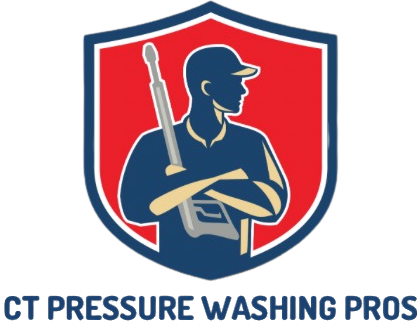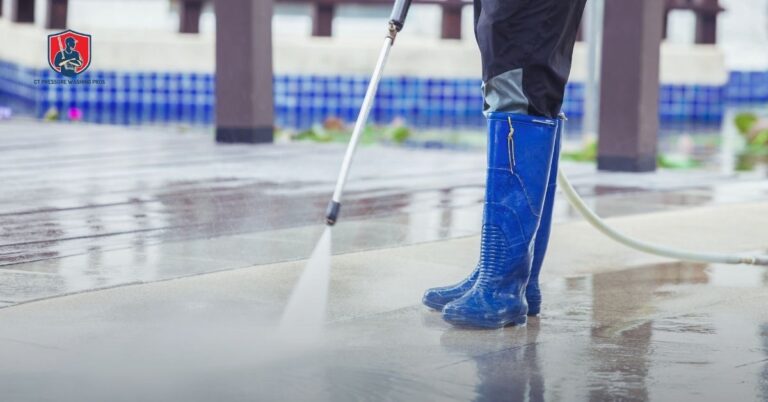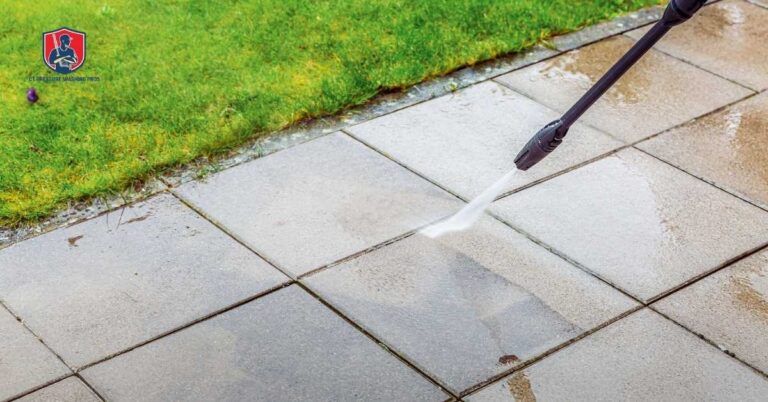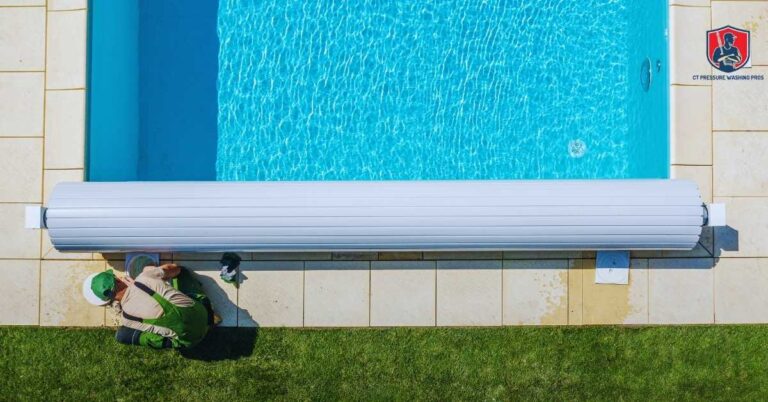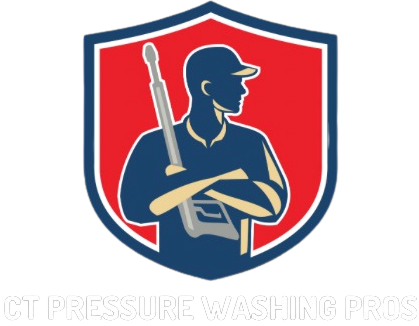Your roof takes a beating from the sun, rain, and debris every day. Over time, dirt, algae, and moss build up, weakening shingles and leading to costly repairs. A neglected roof doesn’t just look bad—it shortens the roof’s lifespan, raises energy bills, and can even lead to leaks.
Dark streaks from algae trap heat, forcing your AC to work harder, while trapped moisture can cause mold inside your home. If you’re thinking of selling, a dirty roof can turn buyers away fast.
Regular cleaning keeps your roof strong, your home efficient, and your curb appeal high. But how often should you clean it? And what’s the best way? Let’s break it down.
Table of Contents
The Importance of Roof Cleaning: Key Benefits
A clean roof isn’t just about looks—it’s about protection. Dirt, moss, and algae can quietly damage your roof, leading to costly repairs, higher energy bills, and even health risks. Below, we’ll break down how regular roof cleaning saves money, extends lifespan, improves efficiency, and keeps your home safe.
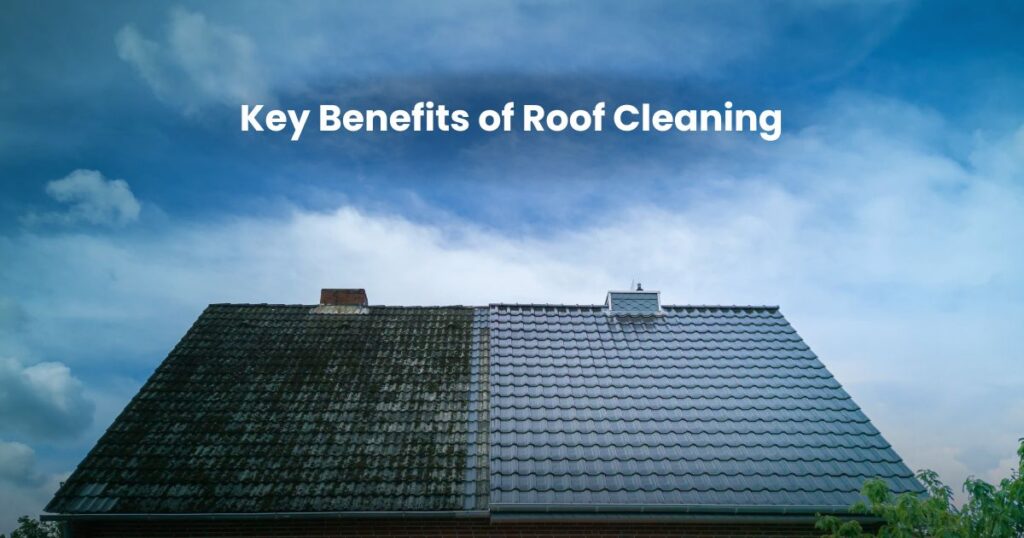
1. Prevents Costly Repairs and Roof Damage
A dirty roof isn’t just an eyesore—it’s a ticking time bomb for expensive repairs. Leaves, moss, and algae trap moisture, causing shingles to weaken and rot. When water seeps into your roof’s structure, small leaks turn into major damage, leading to mold, sagging, and even interior water stains.
Think of your roof like your car. A little dirt won’t hurt, but ignore basic maintenance, and you’ll end up with a costly breakdown. Regular cleaning removes harmful buildup before it can cause real trouble, keeping your roof strong and your repair bills low.
2. Extends Roof Life and Keeps It Working Right
Roof replacements aren’t cheap. But regular cleaning helps your roof last longer by preventing cracks, curling, and warping. Algae and moss might seem harmless, but they slowly eat away at shingles, leading to premature wear.
If you’ve ever seen a neglected wooden fence covered in green growth, you know how moisture causes decay. Roofs work the same way. Removing organic buildup prevents deterioration, giving your roof the longest life possible.
3. Saves Energy and Lowers Utility Bills
A dirty roof doesn’t just look bad—it makes your home hotter. Those black streaks you see on shingles? That’s algae, and it absorbs heat like a sponge, forcing your AC to work harder.
A clean roof reflects sunlight instead of trapping it, helping regulate indoor temperatures. The less heat your home absorbs, the lower your cooling bills. Keeping your roof clean is a simple way to make your home more energy-efficient without touching your thermostat.
4. Protects Your Health and Air Quality
Mold and mildew don’t stay on your roof—they spread. If moisture seeps into your attic, mold spores can circulate through your home’s air, triggering allergies and respiratory issues.
Imagine if your air vents were clogged with dust and mold. You wouldn’t want to breathe that in, right? A dirty roof can have the same effect. Regular cleaning stops mold before it creeps into your home, keeping the air fresh and your family healthier.
5. Boosts Curb Appeal and Home Value
A roof covered in dark streaks and moss makes a house look older and neglected, even if everything else is in great shape. If you’re selling, a dirty roof can scare off buyers before they even step inside.
Curb appeal matters. A clean, well-maintained roof instantly makes your home look newer and more inviting. And if you ever list your property, appraisers take roof condition into account. Keeping it clean can add value and help your home sell faster.
6. Keeps Gutters Clear and Water Flowing
Clogged gutters are a recipe for disaster. When leaves and dirt pile up, rainwater has nowhere to go, spilling over the edges and soaking your foundation, siding, and landscaping. Over time, this leads to cracks, erosion, and even basement leaks.
Since most of that debris comes from the roof, keeping it clean helps prevent clogs before they start. It’s a simple way to protect not just your roof, but your entire home from unnecessary water damage.
7. Stops Pests from Taking Over
A dirty roof is like a welcome mat for pests. Birds, rodents, and insects love nesting in moss and debris, and once they’re in, they’re hard to get rid of. From chewing through shingles to leaving behind droppings, pests can cause real damage.
Ever noticed squirrels or birds hanging around your roof? That’s usually a sign of a problem. Cleaning your roof removes the materials pests use to build nests, making your home less inviting for unwanted guests.
Regular roof cleaning isn’t just about looks—it’s about protection. It saves money, extends the life of your roof, and keeps your home safe from leaks, mold, and pests. So whether you’re thinking long-term or just want your house to look its best, keeping your roof clean is one of the smartest maintenance moves you can make.
Best Practices for Roof Cleaning
Keeping your roof clean isn’t just about spraying it down with a hose. Doing it the right way ensures your roof lasts longer without causing damage in the process. Here’s how to do it safely and effectively.

1. How Often Should You Clean Your Roof?
The best cleaning schedule depends on your location, climate, and tree coverage. Homes in humid areas or surrounded by trees need cleaning more often because moss and algae grow faster. A good rule of thumb? Inspect your roof yearly and clean it every 1–3 years. If you notice dark streaks, moss patches, or debris buildup, it’s time to act.
2. DIY vs. Professional Cleaning: What’s the Best Choice?
Thinking about grabbing a pressure washer and tackling the job yourself? Be careful. High-pressure washing can strip away shingle granules, shortening your roof’s life instead of extending it. Soft washing—a method using gentle cleaning solutions—is the safest approach.
If you’re comfortable with heights and have the right equipment, you can clean your roof yourself. But if you’re unsure or the roof is steep, hiring a professional is a smarter and safer option. Pros have the right tools and know how to clean without causing damage.
3. Choosing the Right Cleaning Methods and Products
Not all cleaning methods are safe for roofs. Avoid harsh chemicals like bleach, which can weaken shingles and harm plants around your home. Instead, use biodegradable roof cleaners that break down algae and moss without causing damage.
Soft washing, which uses low-pressure water and safe cleaning agents, is the best method for asphalt shingles. Tile and metal roofs can handle slightly higher pressure, but it’s always best to check the manufacturer’s recommendations before cleaning.
4. Safety First: Protect Yourself and Your Home
Roof cleaning can be risky, especially if you’re not used to working at heights. If you’re going the DIY route, always use a sturdy ladder, wear slip-resistant shoes, and avoid working on wet or windy days. Safety harnesses are a good investment if your roof is steep.
Also, protect your landscaping. Cover plants with a tarp to shield them from cleaning solutions, and rinse them with water before and after cleaning to minimize exposure.
5. Prevent Future Buildup with Regular Maintenance
Once your roof is clean, keeping it that way is easier than you think. Trim overhanging branches to reduce falling debris and improve sunlight exposure—moss and algae thrive in shady, damp conditions. Cleaning gutters regularly also prevents leaves and moisture from sitting on the roof.
For extra protection, consider installing zinc or copper strips along the ridge of your roof. When it rains, these metals release particles that prevent algae and moss from growing. It’s a small investment that keeps your roof cleaner for longer.
Cleaning your roof the right way isn’t just about making it look good—it’s about protecting your home, saving money, and avoiding unnecessary damage. Whether you choose to do it yourself or hire a professional, following these best practices will keep your roof in great shape for years to come.
Conclusion: Prevent Roof Damage Before It’s Too Late
A dirty roof isn’t just an eyesore—it’s a warning sign. Moss, algae, and debris may seem harmless at first, but they quietly wear down shingles, trap moisture, and create the perfect conditions for leaks. By the time you notice water spots on your ceiling or curling shingles, the damage has already spread.
Think about it like a slow leak under your sink. At first, it’s just a drip. But over time, it rots the wood, attracts mold, and weakens the structure. Roof neglect works the same way—except the damage spreads across your entire home. A simple cleaning job now can save thousands in repairs later.
So what’s the best move? Stay ahead of the problem. Regular roof cleaning keeps your home protected, your energy costs down, and your roof lasting years longer. Whether you do it yourself or call in a professional, keeping your roof clean is one of the easiest ways to avoid costly surprises and keep your home in top shape.
